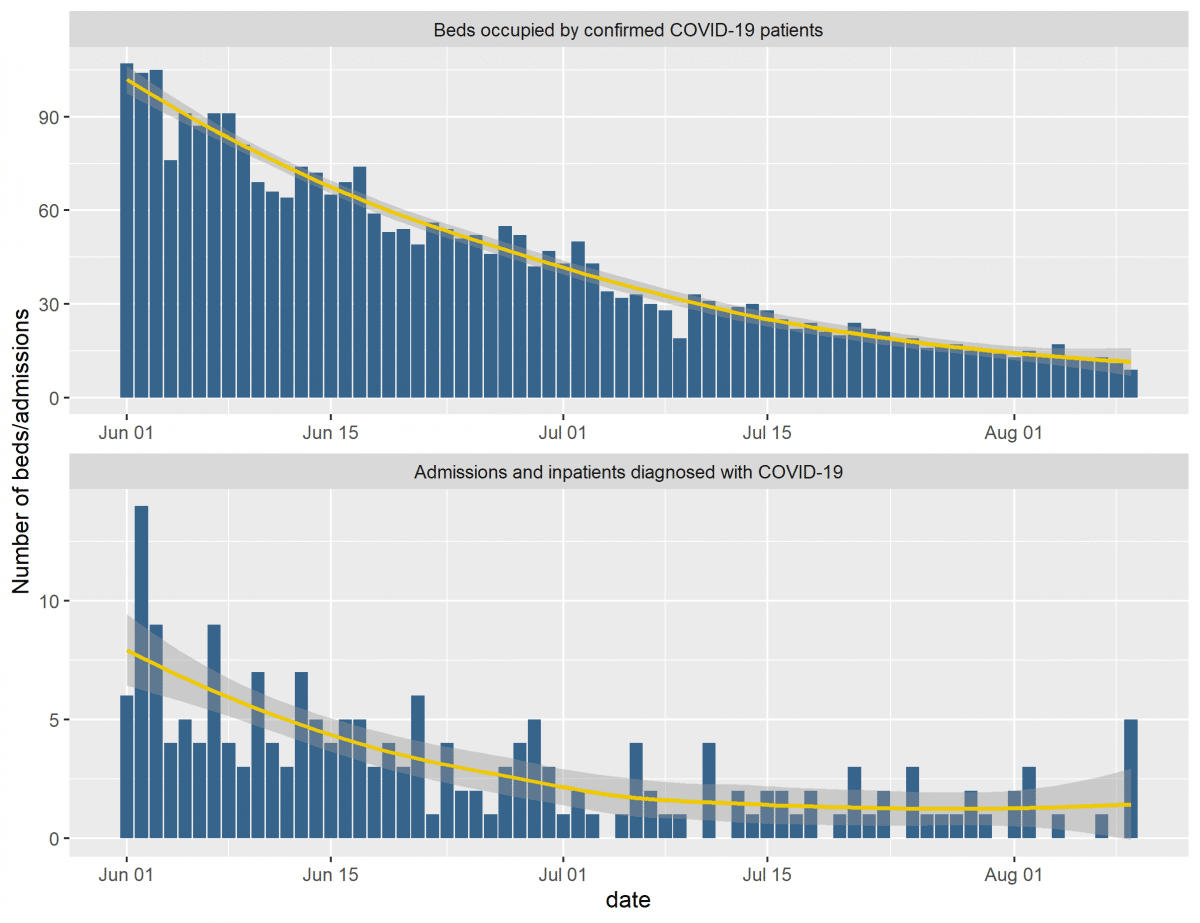Why Oldham shouldn’t go into Lockdown
August 19, 2020
Carl Heneghan Jason Oke
The Manchester Evening News reports that political tensions are simmering as Oldham battles to avoid lockdown. Manchester could break through the 50 cases per 100,000 by the end of the week – placing it in the ‘red alert’ bracket like Oldham.
This evening Andy Burnham, Mayor of Greater Manchester, sent out a tweet that reports cases are coming down. In the week ending the 8th of August, there were 109.7 per 100,000 in Oldham: in the week ending the 15th cases were down to 83.1 per 100,000.
Data from the Digital.nhs.uk – Progression dashboard is more up to date. It shows Oldham at the top of the dashboard with 70.5 cases per 100k for the week of the 11th to the 17th August. Looking at it another way the numbers mean that 0.0007 of the Oldham population has had SARs-CoV-2 RNA detected from a swab in the last week – a tiny fraction of the population.
This represents a further reduction compared with Andy Burnham’s data – 37% drop over the week.
We consider that lockdown measures should be predicated on the impact of the disease. NHS England’s COVID-19 data provides information on the number of people admitted and in a Pennine Acute or Pennine Care Hospital with COVID (these hospitals cover Oldham, Rochdale and North Manchester).
The data shows that 1,252 beds are occupied across the Pennine Hospitals of which nine are occupied by COVID patients as the 9th of August. At the peak on the 12th of April, 290 beds were occupied by COVID patients.
The data also shows that admission remains low at a 7-day moving average of 3 to 4 patients per day, which is down from the preceding week.

Fluctuations in case numbers will occur as areas undergo more testing – this should be expected. We consider the red alert’ bracket line definition of 50 per 100,000 of cases in the population with PCR detected RNA for SARs-CoV-2 does not support a sustainable long term strategy and is not based on sound evidence. Disease measures such as COVID hospital admissions and beds occupied in those with active COVID infection (i.e. in the last 28 days), or symptomatic cases detected should be the main driver for lockdown measures.
AUTHORS
Jason Oke is a Senior Statistician at the Nuffield Department of Primary Care Health Sciences and Module Coordinator for Statistical Computing with R and Stata (EBHC Med Stats), and Introduction to Statistics for Health Care Research (EBHC), as part of the Evidence-Based Health Care Programme.
Carl Heneghan is Professor of Evidence-Based Medicine, Director of the Centre for Evidence-Based Medicine and Director of Studies for the Evidence-Based Health Care Programme. (Full bio and disclosure statement here)
Disclaimer: the article has not been peer-reviewed; it should not replace individual clinical judgement, and the sources cited should be checked. The views expressed in this commentary represent the views of the authors and not necessarily those of the host institution, the NHS, the NIHR, or the Department of Health and Social Care.

